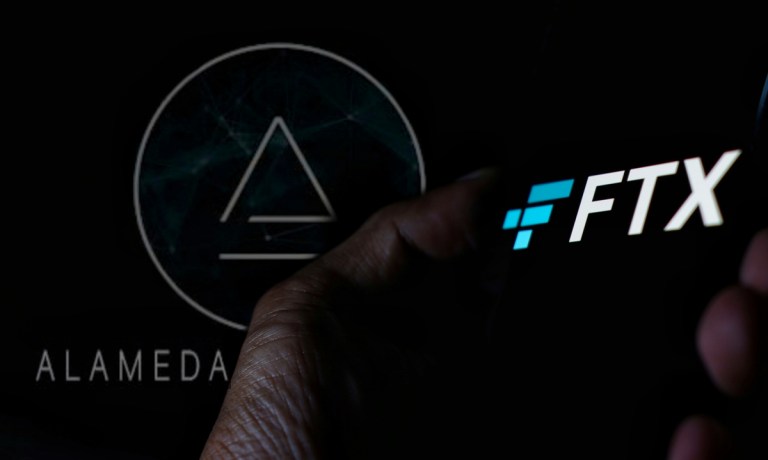
It was tears, not fireworks, for Caroline Ellison’s second day of testimony Wednesday (Oct. 11).
The former Alameda Research CEO fought back sobs describing to the courtroom her “state of mind” when discovering that Alameda would be unable to repay the billions of dollars it had allegedly criminally taken from FTX customers.
“Nishad summarized the withdrawals, which were about $120 million an hour, and you wrote back with a sad face,” federal prosecutors said to their star witness in the criminal trial of FTX co-founder and disgraced CEO Sam Bankman-Fried. “Why?”
“I was terrified,” Ellison replied. “I was in a state of dread. … It was overall the worst week of my life.”
The sixth day of Bankman-Fried’s trial got a little more personal, as Ellison was questioned by prosecutors about the personal and professional dynamics of her relationship with her former boss and on-again-off-again lover, the 31-year-old crypto entrepreneur standing accused of a one of the largest financial frauds in American history.
Under questioning from federal prosecutors, Ellison told the jury Bankman-Fried’s personal philosophical attitude of “maximizing the good” made her “more willing to lie and steal.”
“Over time it was something I became more comfortable with when I was working there,” she said.
Ellison, who was one of Bankman-Fried’s top deputies, has already pleaded guilty to four criminal counts for her role in the implosion of billions of dollars of allegedly misappropriated customer funds entrusted to the FTX cryptocurrency exchange, a fraud which she alleges Bankman-Fried was the mastermind of.
She has yet to be sentenced and is hoping that her cooperation with the government will lead to a more lenient ruling, she told the jury.
When asked by prosecutors what she had to do under the terms of her cooperation agreement, Ellison replied, “tell the truth … and the government will write a letter to the judge about my crimes and cooperation.”
She faces a maximum of 110 years in prison and will need to pay a fine as well as restitution to her victims.
Bankman-Fried has pleaded not guilty to each count he is charged with.
Read also: From Star-Crossed Lovers to Star Witness: Caroline Ellison Says Bankman-Fried Called All the Shots
The prosecution showed the jury several Google Documents and spreadsheets, and questioned Ellison about how she had created “seven alternative” balance sheets for Alameda to use when requesting loans.
She testified that Bankman-Fried asked her to find “alternative ways of presenting the information,” in one example, so that the crypto lender Genesis wouldn’t see that the firm was borrowing $10 billion from FTX and had $5 billion in loans to its own executives and affiliated entities.
“We thought Genesis might share the info,” Ellison said. She restructured the balance sheet to make the financials appear healthier in part by renaming the FTX debt to make it seem like a long-term loan.
When read out loud a June 27, 2022, tweet from Bankman-Fried stating that “backstopping customer assets should always be primary,” Ellison told the court that she considered the statement to be misleading.
Read also: Physics of the FTX Bubble: Hot Air Rises Fastest
As PYMNTS’ Karen Webster wrote about FTX when news of its bankruptcy first broke, “We’ve seen this movie before — the cast of characters changes, but the ending is always the same. The business implodes, the cool kids flame out, and people say that we should have seen the red flags and done something sooner.”
Those red flags were hidden under — or perhaps firmly planted in — the hundreds of millions that FTX spent on celebrity endorsements, advertisements, political donations and more, each aimed toward positioning the exchange as trustworthy and cutting edge.
As the CEO and figurehead of FTX, Bankman-Fried, Ellison testified, was well aware of his personal image and brand, and cultivated it to benefit both himself and FTX’s place within the crypto industry.
“[Bankman-Fried] didn’t comb his hair. He said it had gotten him bonuses at Jane Street and was important to FTX,” she told the jury, adding, “Sam said it was better for his image to drive a Toyota Corolla. So I drove a Honda.”
In a list Ellison maintained titled “Things Sam Is Freaking Out About,” which was entered for evidence, she listed “hedging” at the top, followed by “getting regulators to crack down on Binance,” a one-time FTX competitor and the world’s largest crypto exchange.
Regulatory pressure would presumably have brought more customers to FTX’s platform.
Bankman-Fried was reportedly also interested in both buying Snapchat owner Snap, and raising money from the Saudi Crown Prince Mohammed bin Salman.
Ellison is expected to continue testifying into Thursday, as the defense had just begun their cross-examination when the trial closed for the day. Following Ellison’s testimony, the prosecution’s next witnesses will be former Alameda employee Christian Drappi and BlockFi CEO Zac Prince.